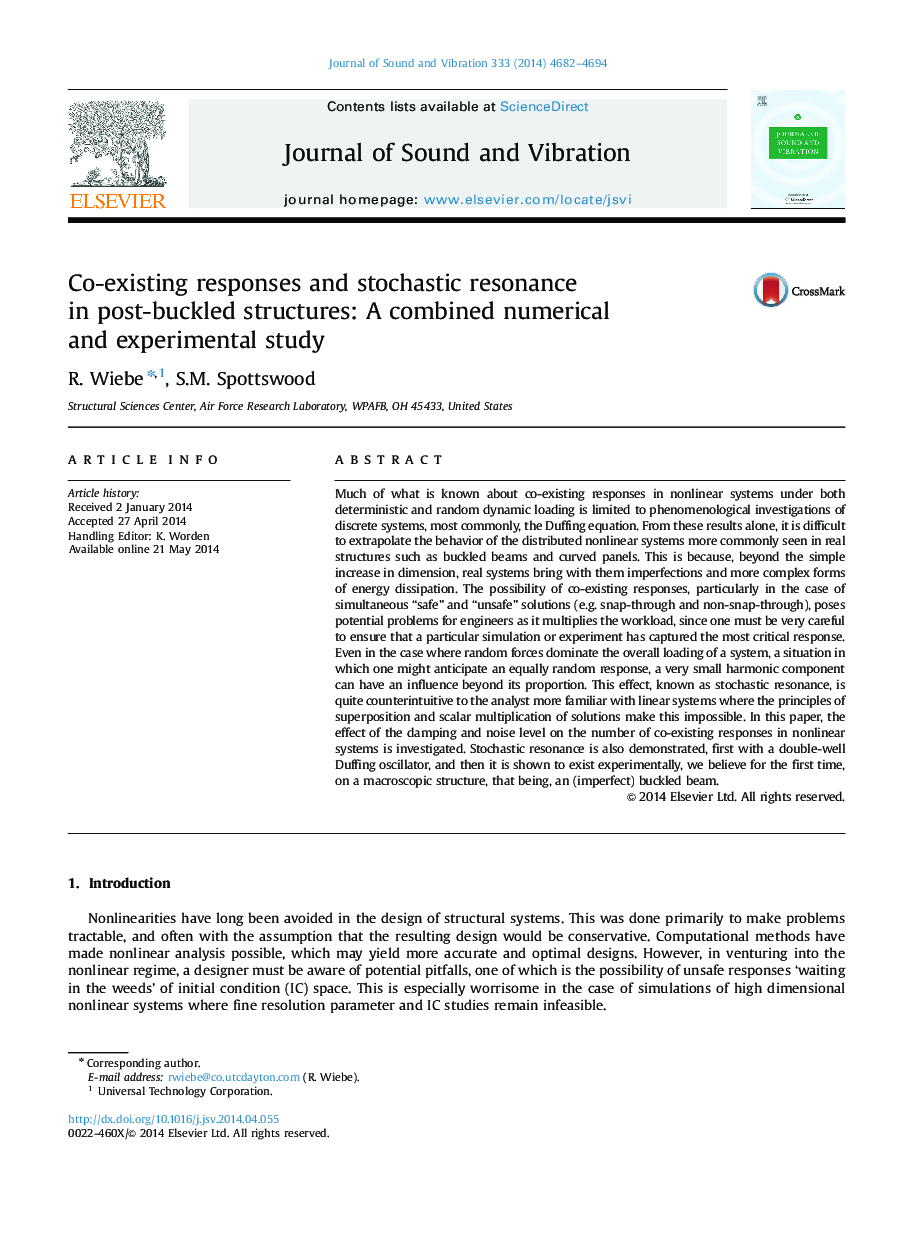| Article ID | Journal | Published Year | Pages | File Type |
|---|---|---|---|---|
| 287488 | Journal of Sound and Vibration | 2014 | 13 Pages |
Much of what is known about co-existing responses in nonlinear systems under both deterministic and random dynamic loading is limited to phenomenological investigations of discrete systems, most commonly, the Duffing equation. From these results alone, it is difficult to extrapolate the behavior of the distributed nonlinear systems more commonly seen in real structures such as buckled beams and curved panels. This is because, beyond the simple increase in dimension, real systems bring with them imperfections and more complex forms of energy dissipation. The possibility of co-existing responses, particularly in the case of simultaneous “safe” and “unsafe” solutions (e.g. snap-through and non-snap-through), poses potential problems for engineers as it multiplies the workload, since one must be very careful to ensure that a particular simulation or experiment has captured the most critical response. Even in the case where random forces dominate the overall loading of a system, a situation in which one might anticipate an equally random response, a very small harmonic component can have an influence beyond its proportion. This effect, known as stochastic resonance, is quite counterintuitive to the analyst more familiar with linear systems where the principles of superposition and scalar multiplication of solutions make this impossible. In this paper, the effect of the damping and noise level on the number of co-existing responses in nonlinear systems is investigated. Stochastic resonance is also demonstrated, first with a double-well Duffing oscillator, and then it is shown to exist experimentally, we believe for the first time, on a macroscopic structure, that being, an (imperfect) buckled beam.
